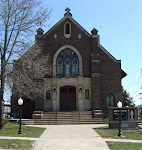by Br Lawrence Lew, O.P.
Bishop Edward Slattery's use of the cappa magna at a Pontifical High Mass in Washington, D.C. on 26 April 2010 gave rise to considerably negative and indignant comments. A friend of mine recently pointed out the following letter to 'America' magazine from the Director of Communications of the Diocese of Tulsa, Mgr Patrick Brankin. It is a response to those who protested against the use of this pontifical garment, that is still permitted by the current Ceremonial of Bishops (§1200). Mgr Brankin's letter offered an interesting perspective on the use of the cappa magna, and its symbolism, which I had not encountered before:
"Please allow me to respond to two letters that appeared in your May 31 issue concerning the liturgical use of the capa magna at the solemn pontifical Mass celebrated by Bishop Slattery in Washington, D.C.
 Bishop Slattery has received close to 2,000 letters and e-mail messages from 13 countries around the world commenting on the prayerfulness of that Mass and the depth of comfort the faithful found in his homily.
Bishop Slattery has received close to 2,000 letters and e-mail messages from 13 countries around the world commenting on the prayerfulness of that Mass and the depth of comfort the faithful found in his homily.The capa magna does indeed represent the finery of the world, its power and prestige. That is why after his entrance wearing it, the prelate is publicly stripped of this finery and humbled before the congregation. Then, vestment by vestment, the bishop is clothed in the new man of which St. Paul speaks, including the baptismal alb, the dalmatic of charity, the stole of pardon and the chasuble of mercy. When finally clothed in Christ, the prelate makes a second entrance into the church to begin the eucharistic celebration in persona Christi, the visible head of the body, the church.
It was a clear statement that the power and prestige of the world have no place at the altar, but it is expressed in a liturgical ritual or symbol, which, unfortunately, are often lacking in the contemporary rites and thus hard to grasp."
Thanks to the New Liturgical Movement for the article.


